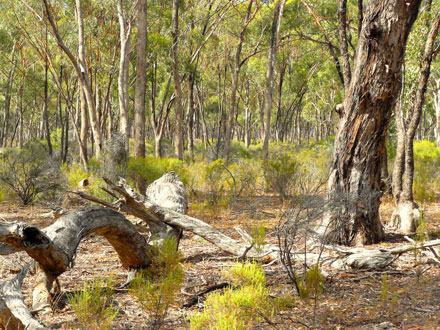
The independent consultant’s report into Victoria’s Regional Forest Agreements grossly underestimates the full economic value of the native forest timber industry, according to the sector’s peak body. The Victorian Association of Forest Industries (VAFI) said the consultant’s report, which assessed the current RFAs and recommended a way forward for the new RFAs, said the sale value of harvested wood from state forests was $102 million in 2016-17. Source: Philip Hopkins for Timberbiz
Several reports from Deloitte Access Economics and Professor Jacki Schirmer at the University of Canberra showed this assessment was inadequate, said VAFI in its submission to the inquiry into the new generation of RFAs, which are scheduled to be completed by next March.
VAFI said key statistics included:
- The Gross Regional Product of the native forest sector in the Central Highlands RFA area and Gippsland is $740.5 million.
- VicForests generated $573 million in revenue through its contractors ($76 million) and direct customers ($497 million) in the Central Highlands in 2013-14. This resulted in 2117 full-time equivalent workers Central Highlands area.
- The gross annual direct expenditure by the Victorian native hardwood sector is $678 million; the net annual direct expenditure (including transfers to other parts of industry) is $417 million.
- Each job in the native hardwood sector is estimated to generate a further 1.9 jobs through flow-on economic activity.
VAFI said almost all native hardwood processed in Victoria was supplied from state forests. “The RFAs are therefore crucial to maintaining a sustainable resource supply,” the association said.
VAFI said the consultation report also over-reported the harvested area, citing an annual net harvested area of 4400-5600 hectares across the state.
“It is not made clear that this figure includes thinning operations for stand management, which are formally excluded from Allocation Order area limits,” the association said. “The net harvested coupe area for the same period is in the range 2600-3000 hectares.”
VAFI emphasised that the native forest sector was an integral part of the state’s broader forestry industry, which included softwood (pine) timber sourced from private plantations.
Figures from 2018 showed the industry generated $7.3 billion in sales and services income, with the Melbourne metropolitan region containing 75 per cent of secondary processing jobs.
Other key statistics on the industry include:
- More than 15,000 people are directly employed across the supply chain of forest management and harvesting; primary processing (sawn timber, particleboard, woodchips); and secondary processing (paper packaging, furniture).
- Forest management and primary processing supports about an extra 10,000 jobs in flow-on activity.
- The whole industry, including secondary processing, supports about 40,000 to 50,000 flow-on jobs.
- The Central Highlands and Gippsland contain 55 per cent of Victorian forest management, harvesting and primary processing jobs.
A more comprehensive version of the VAFI RFA paper will appear in the July edition of Australian Forests & Timber.





